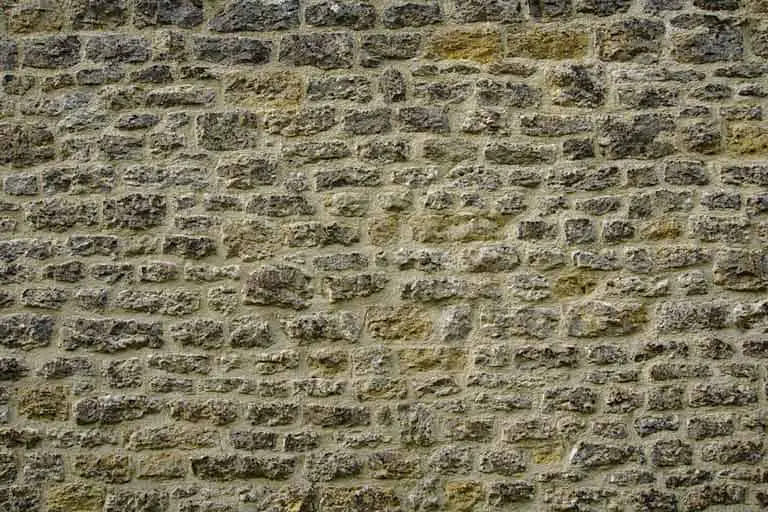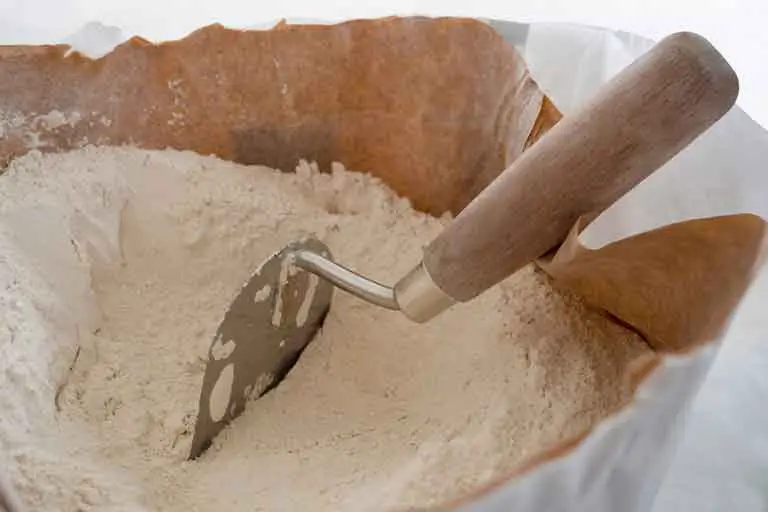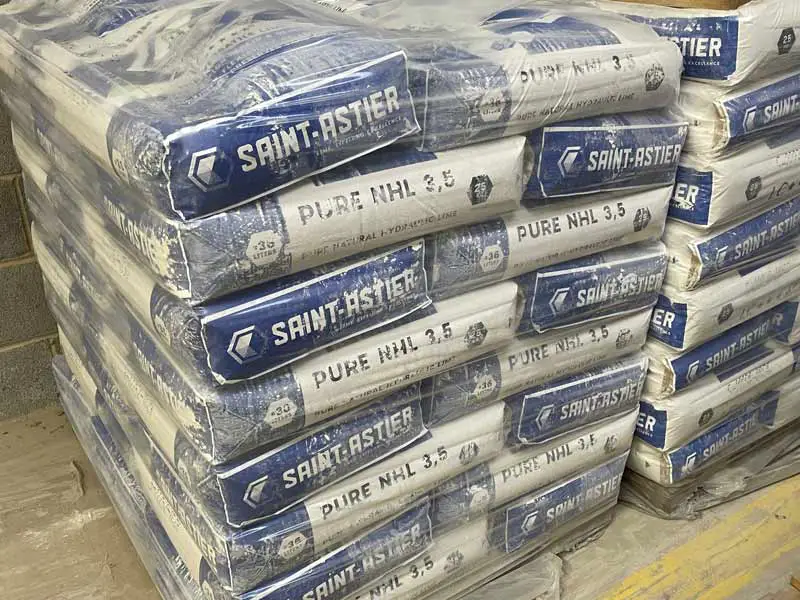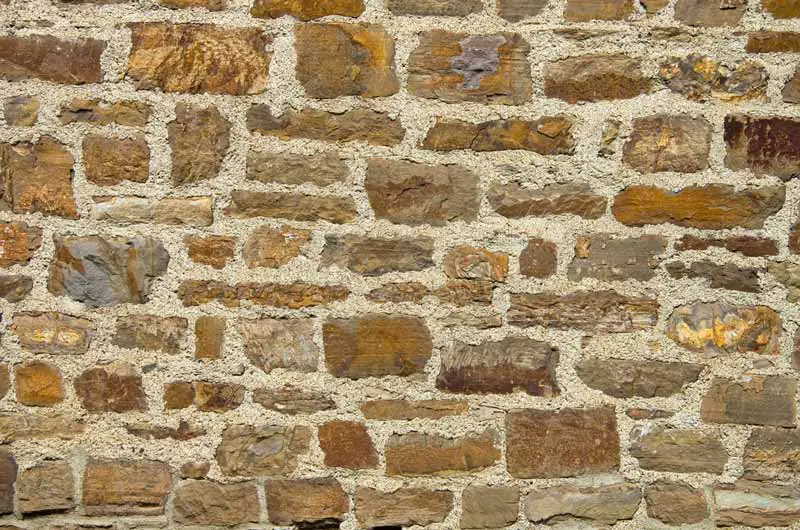
When it comes to pointing, a crucial step in masonry and brickwork, the type of lime you use can significantly impact the outcome. Two common types of lime used in pointing are hydraulic lime and hydrated lime. Understanding their differences, strengths, and properties is essential for selecting the right lime for your project.
Hydraulic lime is known for producing a harder and faster set than hydrated lime and is often used for more exposed areas requiring higher strength. On the other hand, hydrated lime is more flexible and breathable, making it suitable for softer materials and conservation work. Both hydraulic and hydrated lime are traditionally used in lime mortar, ensuring compatibility with a broader range of building materials, including brick, stone, and various types of cement.
Selecting the most suitable lime product for your pointing project will ultimately depend on the job’s specific requirements. Careful consideration of factors such as the type of masonry, exposure to weather, and the desired finish will help ensure you choose the right lime that achieves your desired results and maintains the integrity of your structure.
Understanding Hydraulic and Hydrated Lime
In this section, you will learn about the differences between hydraulic and hydrated lime and their uses and properties.
Nature of Lime and Its Types
Lime is a versatile and essential material used in various applications like construction, agriculture, and chemical manufacturing. There are two main types of lime: hydraulic and non-hydraulic (hydrated). Understanding their differences will help you choose the right one for your needs.
Hydraulic Lime is made from limestones with naturally occurring impurities. These impurities give the lime its hydraulic properties, allowing it to set and harden through chemical reactions with water (hydration). It is available in powder form and has a faster setting time than non-hydraulic lime. Hydraulic lime also provides higher strength but lower permeability and flexibility.
There are different levels of hydraulic lime, with NHL5 being the most hydraulic and NHL2 being the least. The more hydraulic a lime is, the faster it sets and the greater its final strength. However, this also means that it will be less breathable and flexible.
Hydrated Lime, also known as calcium hydroxide, can either be a white powder or a wet putty-like material called lime putty or fat lime. It is commonly used as a building material, particularly as a mortar for bricklaying and plastering. Compared to hydraulic lime, hydrated lime is more flexible, breathable and has slower setting times.
Hydrated lime is also known as non-hydraulic, air or lime putty in traditional building. It does not contain the same impurities as hydraulic lime and relies on exposure to carbon dioxide in the air to harden. This type of lime is more suitable for repairs, restoration work and historic buildings due to its compatibility and breathability.
It is very important to note that powdered hydrated lime commonly sold by builders merchants should almost never be used to create lime mortars, renders or plasters. This lime is often seen as inferior to proper lime putty or powdered quicklime. Powdered hydrated lime is primarily used as a plasticiser in cement mortars to make them more workable.

In summary, hydraulic lime is more appropriate if you need a lime mortar with a quick setting time and higher strength. However, it is best to opt for hydrated lime for repairs or restoration of older buildings due to its breathability and compatibility with various materials.
Related article: Hydrated Lime vs Hydraulic Lime: What Are The Differences?
Components and Manufacturing Process
The foundation of both hydraulic and hydrated lime lies in quicklime (calcium oxide), which is created when limestone is heated at very high temperatures. When water is added to quicklime, it transforms into various types of lime products:
- Hydrated lime: If sufficient water is added, quicklime will form either a fine powder (the stuff commonly available in builders’ merchants) or, if more water is added, it will heat up and form a thick white material called lime putty. Both of these limes are a type of hydrated lime (calcium hydroxide). This type of lime is non-hydraulic and requires exposure to carbon dioxide to harden and set.
- Hydraulic lime: This type of lime sets and hardens upon contact with water, thanks to the presence of reactive minerals such as silicates and aluminates. It is sold as a powder and mixed on-site with sands to create mortars and plasters.

The Role of Carbon Dioxide
Carbon dioxide plays a significant role in the curing process of both hydraulic and hydrated lime mortar. When the mortar is exposed to the air, carbon dioxide in the air reacts with the calcium hydroxide in the mortar, forming calcium carbonate. This reaction strengthens and solidifies the mortar over time, making it more durable.
Hydraulic lime, however, undergoes a different setting process. The reactive minerals in hydraulic lime react with water to form hydraulic calcium silicates and calcium aluminates, allowing it to set underwater or in damp conditions. This makes it a more suitable option for applications where exposure to water or moisture is a concern.
Depending on your specific needs for pointing, you can choose between hydraulic or hydrated lime mortar. Consider factors such as the type of masonry, the level of exposure to water or dampness, and the structural requirements of your project to determine which type would be most appropriate for your needs.
Both hydraulic and hydrated lime are versatile building materials, offering unique properties and benefits to ensure long-lasting, durable pointing in various applications.
Related article: Does Lime Make Mortar Sticky?
Properties of Hydraulic and Hydrated Lime
In this section, we will explore the properties of hydraulic and hydrated lime, focusing on their flexibility, breathability, frost resistance, and carbonation.
Flexibility and Breathability
Hydraulic lime offers a faster initial set and higher compressive strength compared to hydrated lime. However, it is worth noting that the more hydraulic a lime is, the less breathable and flexible it becomes, so it may not be ideal for certain applications.
On the other hand, hydrated lime, also known as non-hydraulic, air, or putty lime, is more breathable and flexible, which proves advantageous in specific situations where these properties are desired. This is commonly beneficial in restoration work or on new eco-homes, which are commonly built using natural materials.
Frost Resistance and Carbonation
Frost resistance is a vital property for mortars in colder climates, where freeze-thaw cycles can significantly impact the durability and longevity of the material. Hydraulic lime is generally more frost-resistant than hydrated lime, thanks to its faster setting times and higher compressive strength. It can even set in more extreme conditions, including underwater.
Carbonation is the process by which lime reacts with carbon dioxide in the air to produce a hard, durable material. Hydraulic lime undergoes this process to a lesser extent than hydrated lime, as it relies primarily on the reaction with water for setting. However, both hydraulic and hydrated lime will carbonate to some extent, contributing to the strength and durability of the finished mortar. This means both limes have good frost resistance when fully cured.
In conclusion, hydraulic and hydrated lime have distinct properties, making them suitable for different applications. For pointing, consider factors like the masonry’s existing condition, the desired flexibility, breathability, and frost resistance when choosing between the two.
Related article: Using Lime Mortar in Winter: What You Need to Know
Application in Construction
Pointing with Lime
When it comes to pointing in construction, the choice between hydraulic and hydrated lime plays an important role. Pointing is the process of filling the joints in masonry with mortar. The type of lime you use can greatly impact the effectiveness and longevity of the pointing.
Hydraulic lime is favourable when resistance to moisture and faster setting times are necessary. This type of lime sets by a chemical reaction with water, making it more suitable for below-ground works, such as cellars and harder materials below-ground or dense brick.
On the other hand, hydrated lime is suitable for softer masonry materials, allowing for more flexibility and breathability in the mortar. Hydrated lime sets via carbonation, making it more appropriate for repointing historic buildings, eco-builds or using in combinations with other materials in a mix.

Lime Mortars in Masonry
Lime mortars play a crucial role in the durability and quality of masonry constructions. When mixing your lime mortar for pointing or repointing, the ratios and type of lime used will impact the performance and workability of the mixture.
A general rule of thumb is to use a 3:1 sand-to-lime mix, but it’s essential to consider using the appropriate lime mortar for the specific masonry material and application. Mixing and handling the lime mortar are also important aspects to consider. Agitating the mortar will improve its workability, and if needed, only a small amount of water should be added if it feels stiff and dry.
Remember that your lime mortar’s consistency should be workable without being too wet. A stiffer mortar helps achieve cleaner work with less staining on the masonry. Overly wet mortars can increase the risk of shrinkage cracking, so finding the right balance for your mortar consistency is crucial.
Overall, determining whether hydraulic or hydrated lime is better for pointing will depend on the specific requirements of your construction project. Remember to consider the materials, moisture exposure, and desired workability while making your choice for the most effective results.
Hydraulic vs Hydrated Lime
Pros and Cons
When it comes to pointing, both hydraulic and hydrated lime have their advantages and drawbacks. Hydraulic limes, such as NHL2, NHL3.5 or NHL5, set faster and have a higher final strength than hydrated lime. This also means they are less breathable and flexible. On the other hand, hydrated lime provides better breathability and flexibility, making it more suitable for softer brickwork or where more movement might occur.
Breathability is essential in pointing as it allows moisture to escape from the brickwork, preventing damage caused by trapped moisture. Hydraulic lime’s reduced breathability can be a downside in certain scenarios, whereas hydrated lime provides better breathability.
Regarding compressive strength, hydraulic lime generally has an edge over hydrated lime. It can withstand greater loads and is better suited for harder bricks or masonry. However, its increased strength can be a downside for softer materials, as the higher compressive force may cause damage to the softer bricks or masonry.
Considering shrinkage, using hydrated lime can lead to lower shrinkage than hydraulic lime. This is because hydrated lime allows for better flexibility, accommodating any movement in the structure without causing cracks or damage.
Ideal Use Scenarios
Selecting the right type of lime for pointing depends on the specific application and conditions. Feebly Hydraulic Lime (NHL2) or Moderately Hydraulic Lime (NHL 3.5) is an excellent choice for soft brick or stone in exposed areas. These types of hydraulic limes are generally suitable for pointing stone and hard brick, along with cellars and below-ground works.
For pointing with softer brickwork or masonry, hydrated lime is highly recommended. Its superior breathability and flexibility make it a better match for these materials, ensuring a long-lasting and reliable finish. Additionally, hydrated lime is best for areas that require a more vapour-permeable mortar, where greater movement is expected.
In conclusion, understanding the differences between hydraulic and hydrated lime is crucial in selecting the right product for pointing. Consider the breathability, compressive strength, and shrinkage properties of each type, along with the specific materials and conditions involved in your project.

Buying Guide for Lime Materials
Engaging Suppliers
When looking for good lime materials, engaging with reputable suppliers is vital. They can provide expert advice on the ideal product for your specific project. While considering lime options, you’ll come across two main types: hydraulic and non-hydraulic (hydrated) lime.
It’s recommended to consult with suppliers and seek guidance on which type of lime to use for your building requirements. A supplier with experience and knowledge can offer suggestions based on factors such as your building’s age, location, and the type of masonry used.
Furthermore, good suppliers will supply products that meet industry standards and pass quality control measures. You may want to research and read reviews to find reliable suppliers with favourable reputations within the industry.
Checking Compatibility with Aggregates
It’s crucial to ensure compatibility between your chosen lime and the aggregates in your project. When you mix lime with sand or other aggregates to form a mortar or plaster, the result should be a well-bonded material with a good balance of strength and flexibility. Here’s what to consider:
- Type of lime: The correct lime type depends on the building materials and level of exposure to the elements. Natural Hydraulic Lime (NHL) could work better for well-exposed or hard masonry situations. However, if you’re dealing with softer masonry, it might be worth exploring a lime putty or a weaker mix of NHL. You could discuss the suitability of various materials with your supplier.
- Mortar Mix: A compatible mortar mix will depend on the existing masonry and aggregates you’re using. Lime mortar is often mixed with sand, but the proportions can vary. Experiment with small-scale samples to achieve the best consistency and strength for your project.
- Compatibility with aggregates: Some building materials may react adversely with certain types of lime, leading to a deterioration or loss of strength. Ensure you test and confirm compatibility between the lime and other materials in your project.
Common Misconceptions and Their Clarifications
Lime vs Modern Cements
A common misconception is that modern cements are always the right choice for pointing due to their strength. However, using lime-based mortars, such as hydraulic or hydrated lime, are often more beneficial for older buildings.
Lime mortar is more flexible and has self-healing properties when compared to modern cement, allowing it to accommodate movements in older structures without causing damage. Additionally, lime-based mortars allow excess moisture to evaporate, reducing potential damage caused by trapped moisture in your buildings’ walls.
Soluble Salts and Staining
Another misconception surrounding pointing is that soluble salts and staining problems are solely due to the material used for the mortar. In reality, soluble salts and staining can be caused by various factors, including materials, construction techniques, and environmental conditions.
To minimise staining caused by soluble salts, you should use a well-graded, clean sand for your mortar mix. A poorly graded or contaminated sand can lead to increased efflorescence, the white powdery deposit often seen on the surface of masonry walls. Proper construction techniques, such as ensuring good drainage, can also help mitigate the risk of staining and salt damage.
It is essential to remember these misconceptions and make informed decisions when choosing between hydraulic or hydrated lime for pointing works. Consider factors like your building’s age, construction materials, and specific requirements to determine the most suitable mortar for your project.
Conclusion
In the realm of construction and restoration, deciding between hydraulic and hydrated lime for pointing is essential. Your choice depends on the specific requirements of your project, as each type of lime has its advantages.
Hydraulic limes are available in different strength grades. Feebly Hydraulic Lime (NHL 2), Moderate Hydraulic Lime (NHL 3.5) and Eminently Hydraulic Lime (NHL 5). Lower-strength hydraulic limes (NHL 2 & 3.5) are ideal for use on softer brick or stone in more exposed areas due to their resistance to weathering. Hydraulic lime is also suitable for pointing in cellars and below-ground works when using Moderate or Eminent limes.
On the other hand, hydrated lime is typically used on older buildings or new eco-builds because of its improved workability, plasticity, and breathability. It’s an excellent option for internal pointing, plastering and lime render applications.
In most cases, you should opt for a lime-based mortar. They offer better overall performance in terms of breathability and natural compatibility with the building materials. Moreover, lime pointing contributes to the long-term preservation of your structure, ensuring a more sustainable and eco-friendly solution than cement mortar.
As you embark on your construction or restoration project, selecting the appropriate lime material is crucial for lasting results. By thoroughly assessing the demands of your project, you can confidently make the right choice between hydraulic and hydrated lime to bring new life and durability to your structure.

